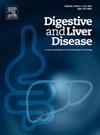In vitro model of liver ischemia/reperfusion injury identifies iRhom2 as a novel disease target
IF 3.8
3区 医学
Q1 GASTROENTEROLOGY & HEPATOLOGY
引用次数: 0
Abstract
Background
Ischemia/reperfusion injury (IRI) is a leading cause of primary non-function and both acute and chronic failure after liver transplantation. IRI creates a pro-inflammatory environment through the activation of resident Kupffer cells, ultimately compromising allograft viability and promoting rejection. iRhom2 has recently emerged as a key regulator of inflammatory and growth factor signaling, suggesting its potential involvement in IRI. However, no data are currently available on its specific role at the onset of liver injury. Here, we aimed to investigate the function of iRhom2 in liver IRI.
Methods
We established an in vitro IRI model using primary macrophages and iPSC-derived hepatocytes in single and co-culture systems. Cold ischemia was simulated by culturing cells in preservation medium under 2% O₂, followed by warm reperfusion for 1, 4, and 24 hours. We compared wild-type (wt) and iRhom2 knockdown (KD) macrophages and evaluated the effects of IRI by ELISA, qPCR, and ATP assays. Shotgun proteomics was performed to analyze the secretome changes in wt and iRhom2 KD cells under IRI. Hepatocyte senescence was assessed by Western blotting and β-galactosidase staining.
Results
We show that iRhom2 contributes to IRI progression in transplanted patients, and its downregulation in M1-like primary macrophages leads to reduced secretion of pro-inflammatory cytokines and danger-associated molecular patterns (DAMPs) implicated in IRI. Remarkably, iRhom2 silencing promotes faster macrophage recovery during reperfusion, as indicated by increased viability and reduced cytotoxicity compared to control cells. Furthermore, iRhom2 activity in macrophages drives an IRI-associated senescence phenotype in injured iPSC-derived hepatocytes by modulating the secretion of the DAMP HMGB1, which in turn activates the p21/p53 signaling pathway in target cells. Importantly, hepatocyte senescence could be prevented by anti-HMGB1 neutralizing antibodies, but not by anti-TNFα antibodies, although TNFα is another major cytokine regulated by iRhom2. These findings support the notion that iRhom2-induced HMGB1 secretion, rather than TNFα, is critical in driving hepatocyte senescence during IRI.
Conclusion
Overall, our data suggest that iRhom2 modulates the release of cytokines and DAMPs in response to IRI through a mechanism that is at least partly independent of the TNF pathway. Targeting iRhom2 could thus represent a promising therapeutic strategy to reduce IRI-related injury, improve graft recovery, and prevent long-term rejection mediated by hepatocyte senescence.
肝脏缺血再灌注损伤的体外模型确定iRhom2为新的疾病靶点
缺血/再灌注损伤(IRI)是肝移植术后原发性无功能及急性和慢性衰竭的主要原因。IRI通过激活驻留的Kupffer细胞创造一个促炎环境,最终损害同种异体移植物的生存能力并促进排斥反应。iRhom2最近被认为是炎症和生长因子信号的关键调节因子,表明其可能参与IRI。然而,目前尚无关于其在肝损伤发病中的具体作用的数据。本研究旨在探讨iRhom2在肝脏IRI中的功能。方法采用原代巨噬细胞和ipsc源性肝细胞单培养和共培养建立体外IRI模型。将细胞置于2% O₂的保存介质中培养,模拟冷缺血,然后进行1、4、24小时的温再灌注。我们比较了野生型(wt)和iRhom2敲低(KD)巨噬细胞,并通过ELISA、qPCR和ATP检测评估IRI的影响。采用散弹枪蛋白质组学分析IRI下wt和iRhom2 KD细胞分泌组的变化。采用Western blotting和β-半乳糖苷酶染色法观察肝细胞衰老情况。结果研究表明,iRhom2有助于移植患者IRI的进展,其在m1样原代巨噬细胞中的下调导致IRI相关的促炎细胞因子和危险相关分子模式(DAMPs)的分泌减少。值得注意的是,与对照细胞相比,iRhom2沉默可促进巨噬细胞在再灌注过程中更快地恢复,这可以通过提高细胞活力和降低细胞毒性来证明。此外,巨噬细胞中的iRhom2活性通过调节DAMP HMGB1的分泌,在受损的ipsc源性肝细胞中驱动iri相关的衰老表型,从而激活靶细胞中的p21/p53信号通路。重要的是,抗hmgb1中和抗体可以阻止肝细胞衰老,但抗tnf - α抗体不能,尽管tnf - α是iRhom2调节的另一个主要细胞因子。这些发现支持了irhom2诱导的HMGB1分泌,而不是TNFα,在IRI中驱动肝细胞衰老的关键。总的来说,我们的数据表明,iRhom2通过至少部分独立于TNF途径的机制调节IRI反应中细胞因子和DAMPs的释放。因此,靶向iRhom2可能是一种有希望的治疗策略,可以减少iri相关损伤,改善移植物恢复,并防止肝细胞衰老介导的长期排斥反应。
本文章由计算机程序翻译,如有差异,请以英文原文为准。
求助全文
约1分钟内获得全文
求助全文
来源期刊

Digestive and Liver Disease
医学-胃肠肝病学
CiteScore
6.10
自引率
2.20%
发文量
632
审稿时长
19 days
期刊介绍:
Digestive and Liver Disease is an international journal of Gastroenterology and Hepatology. It is the official journal of Italian Association for the Study of the Liver (AISF); Italian Association for the Study of the Pancreas (AISP); Italian Association for Digestive Endoscopy (SIED); Italian Association for Hospital Gastroenterologists and Digestive Endoscopists (AIGO); Italian Society of Gastroenterology (SIGE); Italian Society of Pediatric Gastroenterology and Hepatology (SIGENP) and Italian Group for the Study of Inflammatory Bowel Disease (IG-IBD).
Digestive and Liver Disease publishes papers on basic and clinical research in the field of gastroenterology and hepatology.
Contributions consist of:
Original Papers
Correspondence to the Editor
Editorials, Reviews and Special Articles
Progress Reports
Image of the Month
Congress Proceedings
Symposia and Mini-symposia.
 求助内容:
求助内容: 应助结果提醒方式:
应助结果提醒方式:


